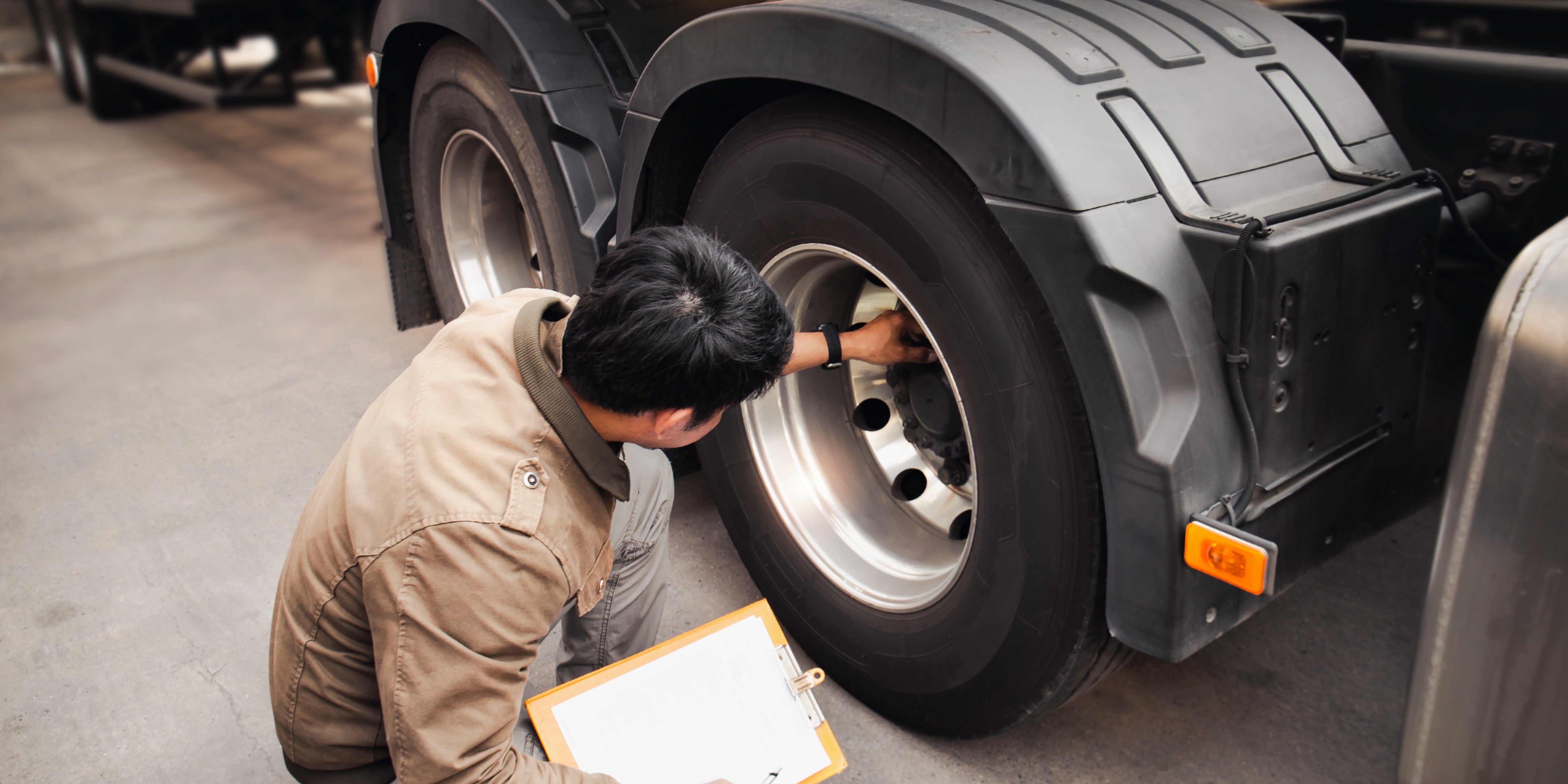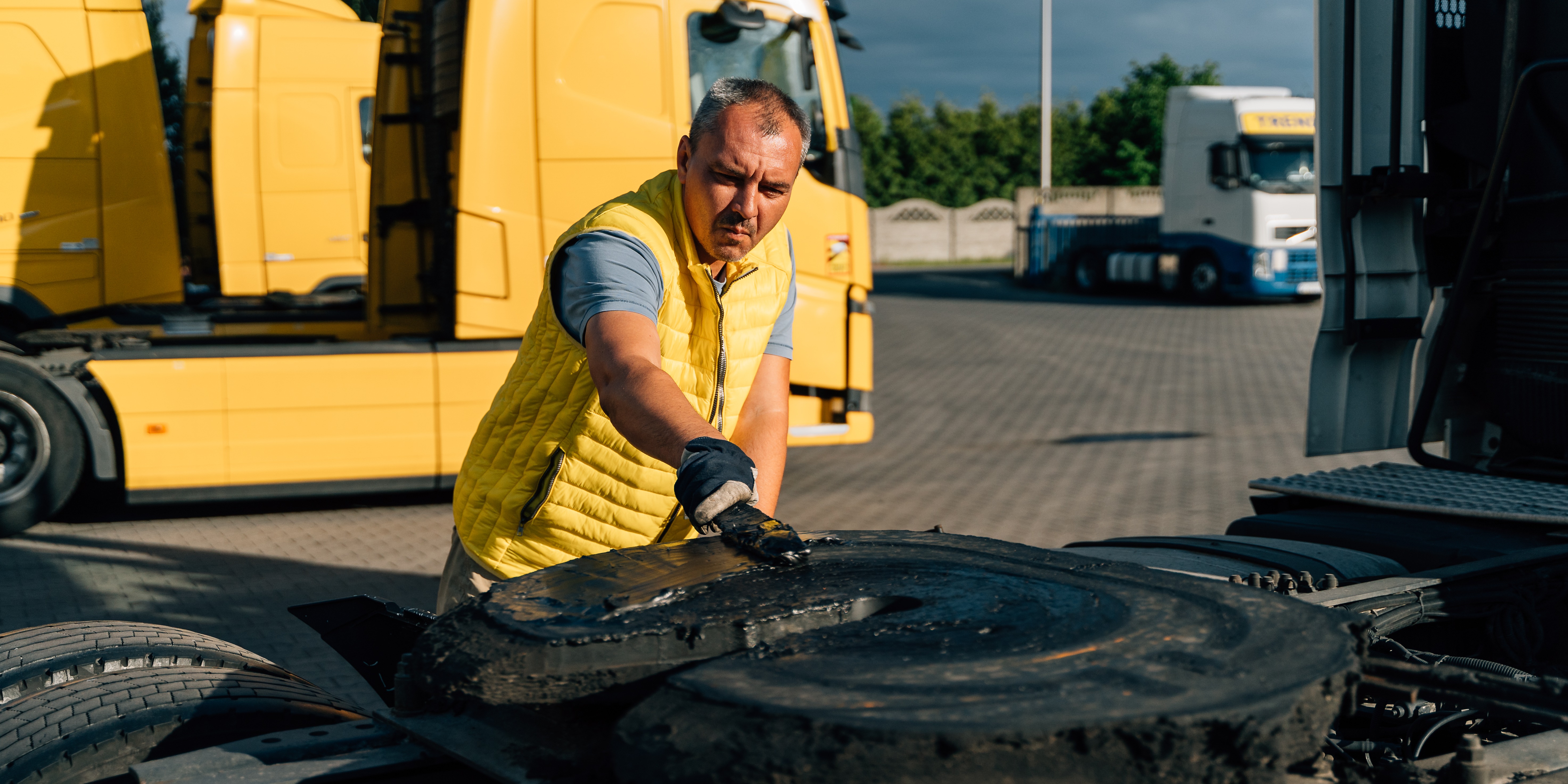
DOT Inspection Readiness for Heavy-Duty Maintenance Shops
When it comes to heavy-duty repair, Department of Transportation (DOT) compliance is the line between profit and penalty. Federal law (49 CFR §396) requires an annual inspection covering all “critical parts” - from brakes and lights to tires, steering, and coupling devices. Failing just one inspection can put a truck immediately out of service (OOS), costing fleets hundreds per day and putting your shop’s credibility on the line.
In 2024, CVSA’s International Roadcheck inspected nearly 49,000 trucks and placed more than 9,000 out of service. The leading causes? Defective brakes (25%) and lighting violations (12%) - exactly the types of repairs many shops handle daily. For shop owners, this data sends a clear message: every brake job, lamp replacement, or inspection you perform must meet DOT standards or risk costly downtime for your customers.
Why DOT Inspections Matter for Shops
The Financial Stakes of Downtime
Unplanned downtime is expensive. Studies show fleets lose $450-$760 per truck per day when vehicles are sidelined. A failed inspection can wipe out the profit from a repair job and strain customer relationships. Proactive compliance practices help prevent OOS orders and establish your shop as a trusted partner in uptime.
Common Failure Hotspots
According to CVSA, the most frequent OOS violations are:
- Brakes - 25% of all OOS violations
- Tires and wheels - ~21%
- Lighting devices - ~12%
- Cargo securement & suspension - smaller but recurring issues
For shops, this means every brake adjustment, tire check, and lamp replacement must go beyond “good enough.” Missing a crack, worn shoe, or blown bulb can cost your customer thousands - and cost your shop its reputation.
Paperwork and Documentation
Inspections aren’t just about hardware. Inspectors review:
- Annual inspection reports (must be kept for 14 months)
- Driver Vehicle Inspection Reports (DVIRs) for daily checks
- Vehicle docs like registration, insurance, and inspection certificates
If your shop doesn’t resolve and document DVIR-noted defects before a truck’s next trip, that truck is already out of compliance.
Staying Current with Regulations
DOT and FMCSA rules evolve constantly. Lighting, emissions, and hours-of-service standards shift, and state-level requirements (like California CHP) can be stricter. Shops that fail to keep up put themselves and their customers at risk.
Best Practices to Stay Updated
- Subscribe to FMCSA & CVSA updates - free email alerts flag regulatory changes before they hit.
- Assign a compliance owner - designate one person to track due dates, DVIR closure, and inspection schedules.
- Leverage associations - CVSA, ATA, and state trucking groups often provide early compliance insights.
A few minutes per month spent reviewing updates can save tens of thousands in fines or downtime later.
Preparing Your Shop for DOT Inspections
Use Detailed Checklists
The FMCSA’s Appendix A checklist should be your shop’s standard. Every annual inspection must cover:
- Brakes (service, parking, trailer connections)
- Steering mechanisms
- Tires, wheels, rims
- Lights and reflectors
- Horns, wipers, mirrors
- Coupling devices
- Suspension and frames
- Emergency equipment
Digital checklists help ensure nothing is missed - and create a record inspectors trust.
Tie DVIRs to Work Orders
Drivers are required to submit daily inspection reports covering brakes, tires, lights, etc. Any noted defects must be fixed before the next dispatch. With digital tools like ShopView, DVIR defects can auto-generate work orders, ensuring no issue is overlooked.
Train and Certify Inspectors
DOT requires inspectors to be properly qualified. Sending techs to FMCSA or CVSA training builds credibility and ensures your shop’s inspections withstand scrutiny.
Pre-Inspection Tune-Ups
Before stamping a vehicle ready, do a quick “test drive” inspection:
- Adjust and gauge brakes
- Replace any suspect bulbs or wiper blades
- Check torque on wheel lugs
- Top off fluids
These quick steps can prevent costly failures during roadside inspections.
Leveraging Technology for Compliance
Manual logs and whiteboards leave too much room for error. Heavy-duty SaaS platforms like ShopView help shops tie compliance into everyday workflows.
Telematics Integration
ShopView integrates with telematics providers (Samsara, Geotab, Motive), allowing:
- Automatic work orders from fault codes (e.g., ABS or brake alerts)
- Odometer-based reminders for inspections or maintenance
- Predictive alerts that prevent breakdowns before they happen
DVIR Integration
When drivers use digital DVIR apps (like Whip Around), their defect reports flow directly into ShopView, automatically scheduling repairs. This creates a closed-loop audit trail inspectors love: “Defect found → Work order created → Defect repaired.”
SaaS vs. Paper
Cloud-based platforms update automatically with new forms, regulations, and integrations. Unlike paper or generic auto software, ShopView:
- Tracks DOT due dates
- Stores digital inspection histories for audits
- Syncs parts usage and technician hours directly to vehicle records
For multi-location shops, SaaS offers a unified compliance dashboard across all branches - something paper systems can’t replicate.
The ROI of Digital Compliance
Time and Labor Savings
Shops report saving 1-2 admin hours per tech per day by digitizing DOT paperwork. That’s more time billed to actual wrench work instead of chasing forms.
Fewer Downtime Events
Predictive alerts and systematic checklists dramatically reduce OOS violations. Fleets using telematics-driven maintenance see 70% fewer breakdowns and up to 50% lower repair costs.
Higher Profit per Bay
With better scheduling and inventory control, bays stay full and parts delays are reduced. Shops using ShopView often report double-digit gains in revenue per bay within 90 days.
Compliance as a Selling Point
Positioning your shop as “DOT-ready” is a competitive edge. Fleets want maintenance partners who ensure trucks won’t get sidelined. Shops that market their compliance processes can justify higher rates and win more contracts.
Why ShopView Is Built for DOT Readiness
Unlike generic auto CRMs, ShopView is purpose-built for heavy-duty repair. Key advantages include:
- DOT inspection templates baked into workflows
- DVIR and telematics integration to auto-create repair orders
- Multi-asset work orders (truck + trailer combos)
- Inventory tracking for compliance-critical parts like brake hoses, bulbs, and seals
- Multi-location dashboards for consistent compliance tracking
Most importantly, ShopView customers see ROI fast. Many report measurable efficiency gains and fewer compliance headaches within 60-90 days.
Conclusion: Turn Compliance Into a Growth Engine
DOT compliance isn’t just about avoiding fines - it’s about protecting uptime, retaining fleet clients, and boosting profitability. Every missed brake adjustment or forgotten DVIR defect is an opportunity lost. By combining disciplined inspection practices with heavy-duty SaaS like ShopView, your shop can:
- Pass inspections with confidence
- Keep customer fleets rolling (and loyal)
- Save hours of admin time each week
- Grow profit per bay
👉 Don’t let DOT compliance trip up your business. Book a free demo of ShopView today and see how a connected platform makes inspections seamless and profitable.
.png?width=1500&height=1500&name=11%20(1).png)








.png?width=1500&height=1500&name=1%20(1).png)

%20-%20Copy.png?width=1500&height=1500&name=2%20(1)%20-%20Copy.png)



